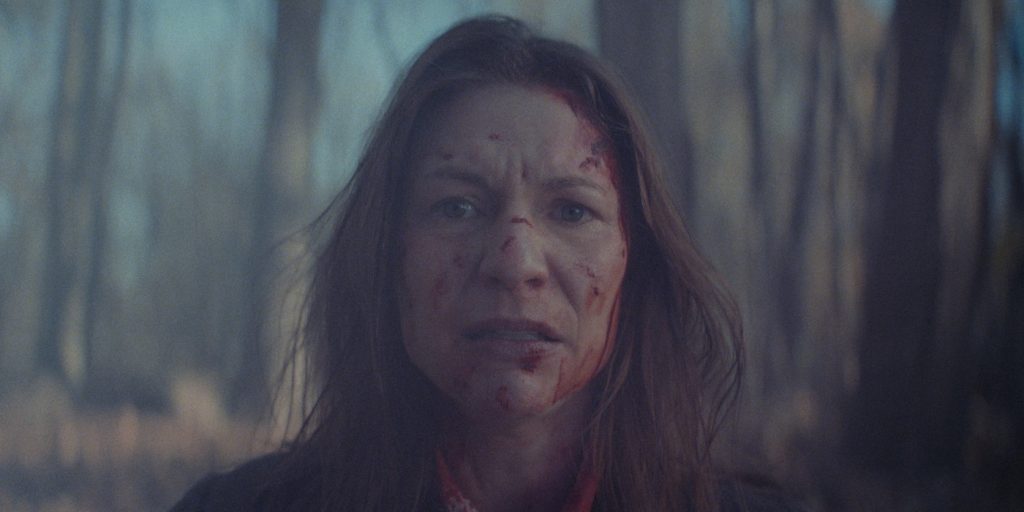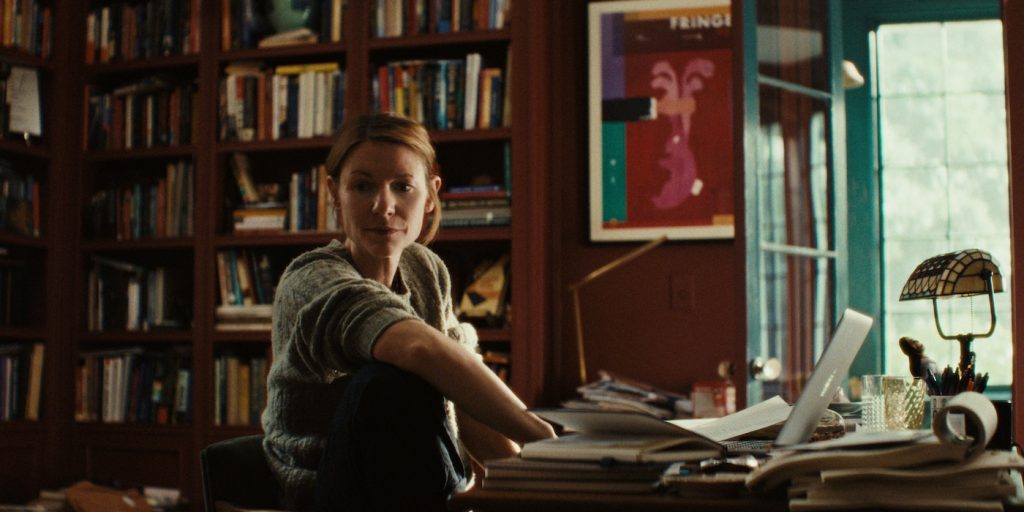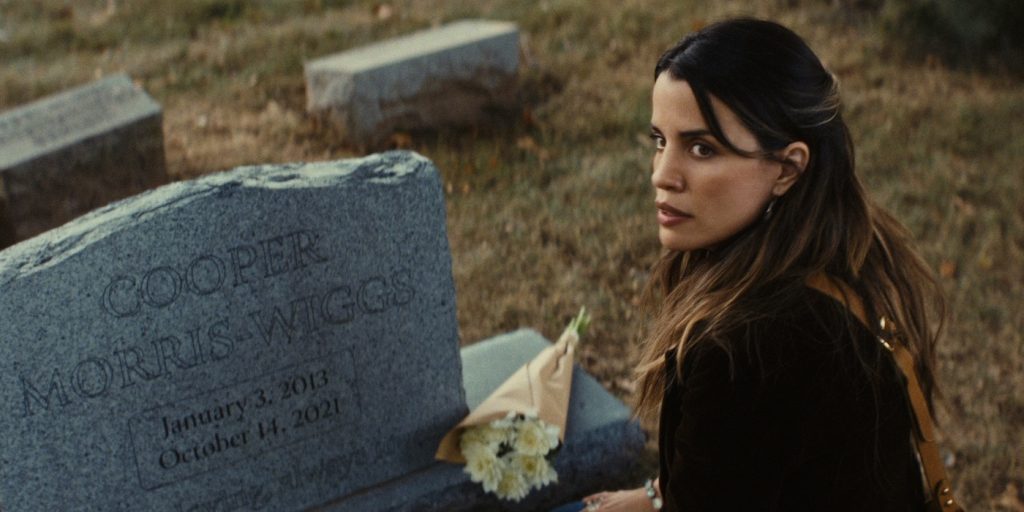How “The Beast in Me” Cinematographer Lyle Vincent Brought ’70s Noir to Netflix’s Claire Danes Thriller
The Beast in Me opens on a tableau of sorrow. Claire Danes, who plays author Aggie Wiggs, is driving her son Cooper (Leonard Gerome) when the unthinkable happens: a car accident takes his life. In the aftermath, her partner Shelly (Natalie Morales) rushes towards her, calling out for him. Drowning in pain, Aggie’s bloodied face can only twist a piercing scream underscored by a cacophonous mix of music and effects. The bleak moment abruptly cuts to a close-up of her against a warm, painterly backdrop, lost in the tragic memory.

The visual style is reminiscent of Francis Ford Coppola’s The Godfather (1972), framed by cinematographer Gordon Willis, where symmetrical compositions and meticulous control curated an often dimly lit, darkened mood. “We looked at a lot of movies by Gordon Willis and [director Alan] Pakula from the ‘70s for the film aesthetic,” says cinematographer Lyle Vincent, who photographed all eight episodes of the Netflix show created by Gabe Rotter and run by executive producer Howard Gordon (Homeland).
At first glance, it would be easy to mistake its look for something shot on 35mm film. “We wanted to shoot on film initially, and made a big pitch to do that, but it didn’t end up going through,” Vincent says. Instead, the cinematographer emulated celluloid, manipulating color, texture, and grain using an Arri Alexa 35 with a mix of Panavision Ultra Panatar II anamorphic lenses and Primo spherical primes and zooms. Lighting was the key ingredient in pulling off its classic cinema style. “This show explores the lightness and darkness of human nature, especially the darkness in our one character. And we liked how those movies were lit. How they let things go almost black in places,” he notes.

The psychological thriller ignites when Nile Jarvis (Matthew Rhys), a real estate shark once suspected in his wife’s death, moves next door to Wiggs. Now remarried to his ex wife’s former assistant, Nina (Brittany Snow), and motivated to change public perception, he decides to share his story with the acclaimed novelist who’s been struggling to write since the death of her son. What begins as an interview becomes a haunting pursuit of truth, guilt, and the ghosts neither can escape.

Six of the eight episodes, including the pilot, were directed by Antonio Campos (the remaining two by Tyne Rafaeli), a frequent collaborator of Vincent. Their most recent effort is the HBO Max limited series The Staircase – another crime drama featuring a novelist, starring Colin Firth and Toni Colette. Drawing from the thriller, the pair carried over centered compositions to isolate moments of heightened drama. “Instead of shooting over-the-shoulder or other things, we put the camera right in front of the actor so you’re in the performance. And especially with someone like Claire Danes, there is so much performance with the eyes and emotions. It was something, man, to watch her do it. It was like every take, every rehearsal, she was just like, it’s like craziness, like how she was just on.” Something Homeland fans know all too well.

The cinematographer used other techniques to push the envelope, including split diopter lenses to manipulate focus and create abnormal tension in shared spaces, while depth of field invited viewers into the world. “We didn’t want excessive shallow depth of field because we wanted that classic 35mm film look, where you can really settle into watching everything. And then when you want the effect of a shallow depth, or something subjective, or hyper depth of field, then those things kind of punctuate,” he details.
The story’s backdrop was shot extensively in New Jersey, in areas like Red Bank, for practical locations, and also in parts of Raleigh, North Carolina, a former Homeland stomping ground. Campos and Vincent approached scenes with concepts and shot lists, never wanting to dilute moments with excessive coverage. “We’d always shoot from the point of view of whose scene it is and which character informed it. However, on the day, we saw things that we never planned, or the actors brought certain brilliant elements. You want to be able to adapt and find those moments as well.”

As Aggie pieces together Niles’s story, insert shots emerge as the unexpected lead, stirring a deeper emotional response. “I love insert and cutaway shots,” admits the cinematographer. “We don’t treat them as secondary, and Antonio is one of those directors who really knows where he wants to punctuate things with intention. So we are always interested in building that into our shooting and treating them with care.” Texture and lighting were adapted to match the story arc. Aggie’s world, from the start, is warmer and inviting. Browns, ambers, and deep, earthy tones dominate, evoking a sense of family and tradition. Niles is a little more enigmatic and then gradually takes on a cooler palette, trading tungsten warmth for neutral tones that sharpen scenes with edge and contrast.

The pinnacle of Vincent’s craft comes in the way he binds crucial plot points through deliberate choices in lighting and composition. One instance is a flashback where Niles and his ex-wife are arguing. The scene is lit from the side and low, almost coming from underneath Niles as he corners her in the room. The frame focuses on the black of his eyes and menacing expression. “He’s like a devil with a heart of darkness,” says Vincent. The visual style was replicated later in a scene where Niles fights with his current wife, Nina – the aesthetic asking the same nightmare: Is he really a killer?
The Beast in Me is now streaming on Netflix.
For more big titles on Netflix, check these out:
How “Frankenstein” Costume Designer Kate Hawley on Dressing Men, Monsters, & Their Mothers



